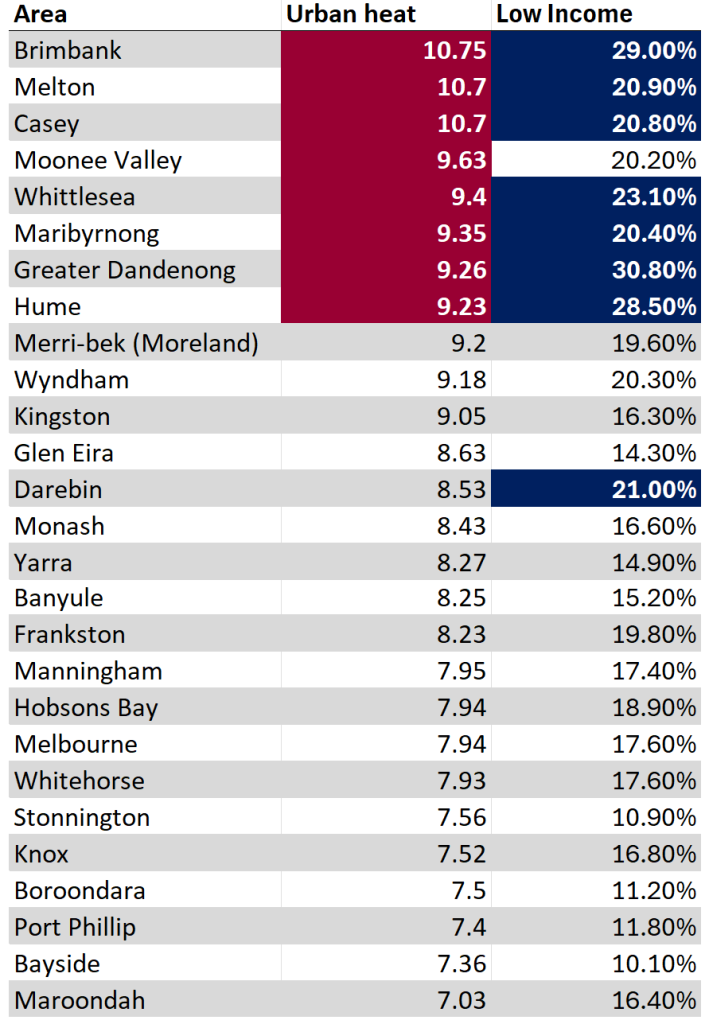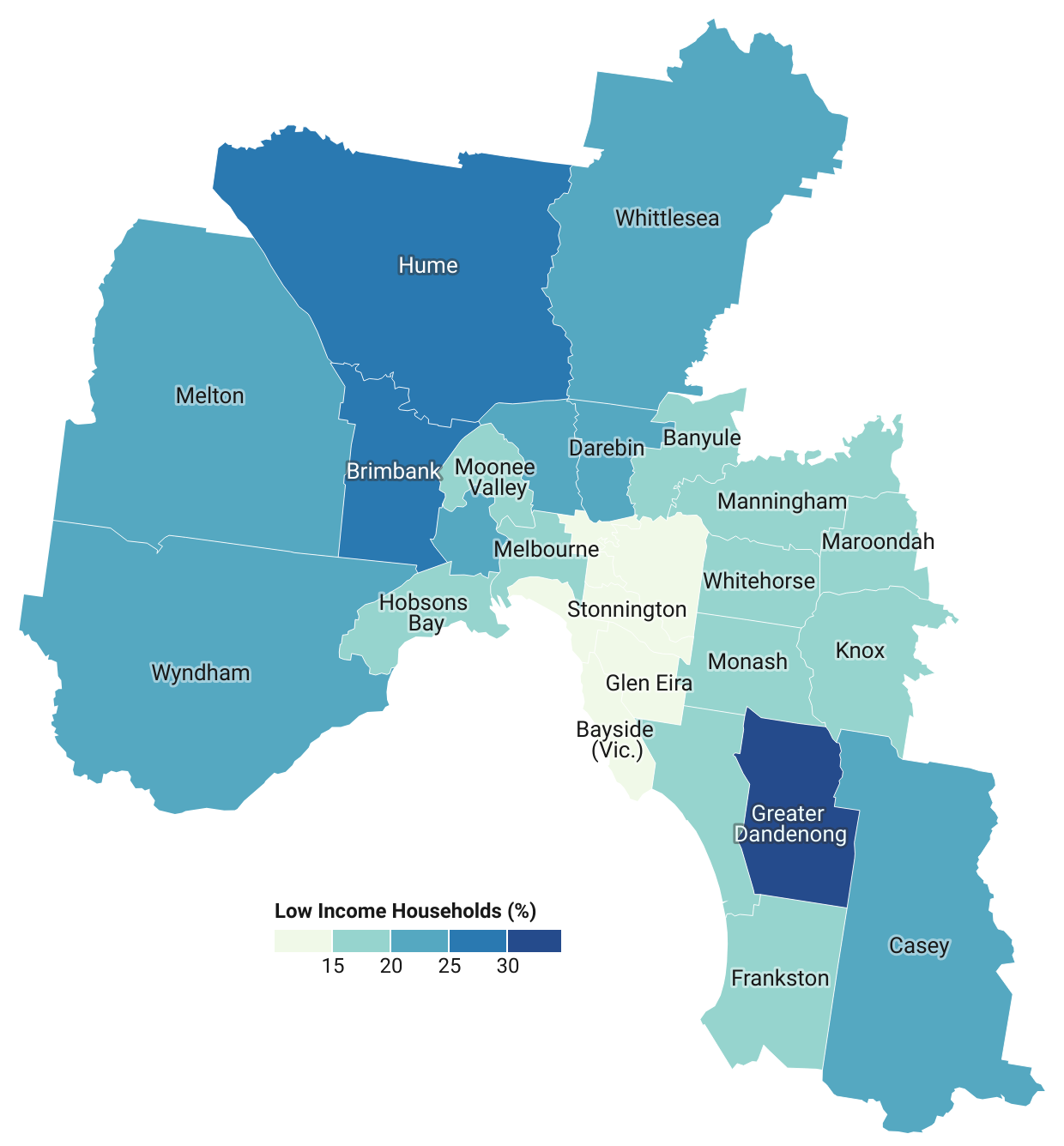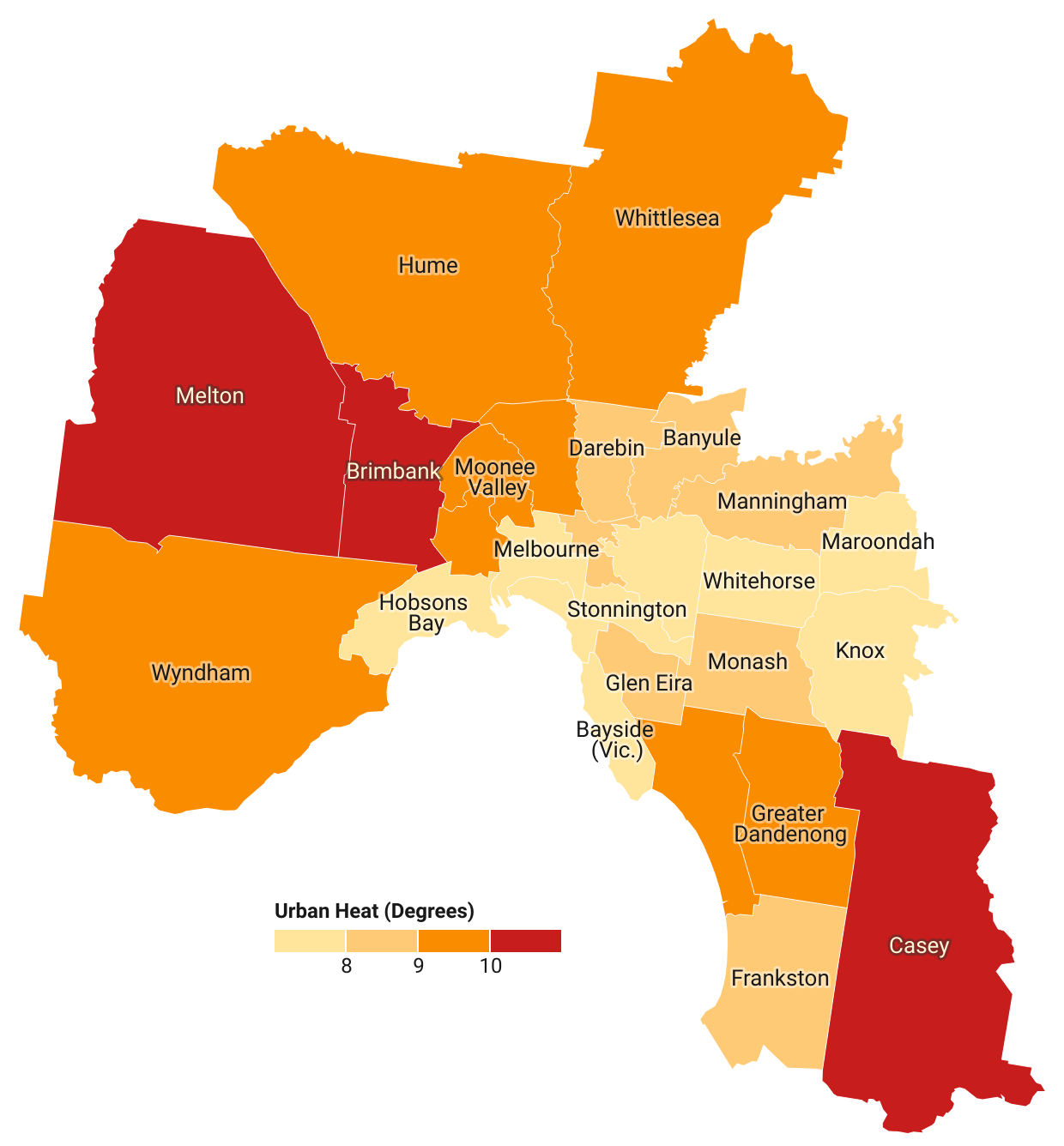Melbourne’s hot divide: the link between disadvantage and urban heat
ANALYSIS
Have you ever driven past a new housing development and clocked a sea of dark roofs with barely any trees or grass in sight?
More housing for a growing Victorian population is good. But as climate change increases the danger of the kinds of heatwaves we’re already seeing this summer, we need to pay closer attention to where and how people live.
If you live in a ‘concrete jungle’ you’re likely to suffer from what’s called the urban heat island effect.
In areas where there are less green spaces like trees and grass, and more urban surfaces that absorb heat and then release it at night, everything feels hotter. Everything is hotter.
And this is particularly dangerous because Victorians living in urban heat islands are also likely to be more vulnerable to heat-related harms on a number of other fronts.
That’s because there’s a correlation between disadvantage and urban heat islands, as new research from VCOSS has confirmed.
We found that the six most disadvantaged LGAs were within the eight hottest areas.
Looking at individual local government areas (LGAs), we found that the six most disadvantaged LGAs were within the eight hottest areas.
For example, Greater Dandenong is the most disadvantaged LGA in Melbourne and is 1.8 degrees hotter than Boroondara.
The ‘top 5’ hottest and most disadvantaged LGAs

We also found a correlation between financial hardship and urban heat – in other words, if you live in a poorer area, you’re more likely to also live in a hotter area.
If you earn $1 to $7,799 a year, the area you live is about 0.6 degrees hotter on average than if you make more than $156,000 a year.
This should raise alarm bells because it means the people least able to keep cool are living in the hottest areas. The people who most need air-conditioning are the least able to afford it.
And it’s more dangerous when you consider the other factors likely to compound and make extreme heat a severe or even lethal health risk – all of which are again more likely to affect people living in poorer areas.
These include:
- Living in poor-quality housing without proper insulation.
- Having disabilities or pre-existing health issues.
- Being new to Australia or having low English skills.
- Doing outdoor or insecure work.
- Being a woman dealing with family violence and/or pregnancy.
VCOSS is pushing for the 2024 Victorian Budget to include measures that help low-income households keep cool, including free housing retrofits to enhance the energy efficiency, comfort and safety of people’s homes.
Minimum energy efficiency standards for rental properties are also needed to keep renters safe. Previous VCOSS research showed that homeowners were twice as likely to have insulation as renters.
VCOSS is the peak body for Victoria’s social and community sector, and the state’s premier social advocacy body.
We work towards a Victoria free from poverty and disadvantage, where every person and community experiences genuine wellbeing.

VCOSS acknowledges the Traditional Owners of Country, and we pay respect to Elders and Ancestors. Our business is conducted on sovereign, unceded Aboriginal land. The VCOSS offices are located on Wurundjeri Woiwurrung land in central Naarm.

